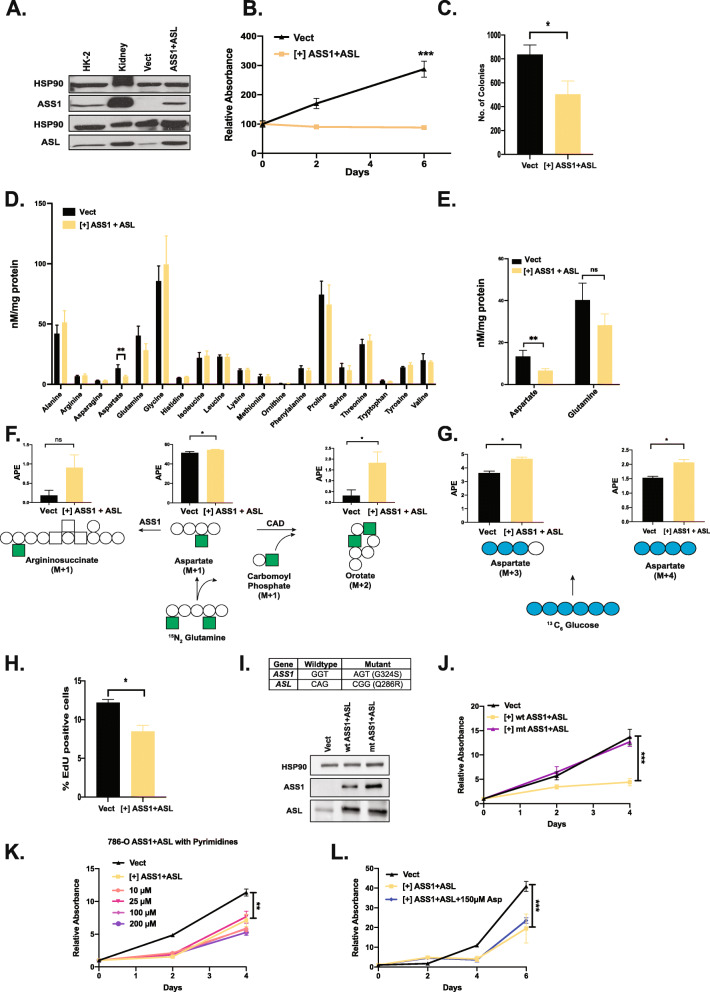Fig. 3.
Combined expression of ASS1 and ASL in ccRCC cells suppresses growth and alters the metabolic landscape in a catalytically dependent manner. A Combined ectopic expression of ASS1 and ASL in 786-O polyclonal population. HSP90 serves as the loading control, while HK-2 cells and the normal kidney are normal controls. B ASS1+ ASL expression suppresses growth in 786-O cells in a 2D growth assay. Error bars represent SEM of 7 wells, and cells were grown in 1% FBS in complete DMEM. ***p < 0.001. C 3D soft agar colony-forming assay with 786-O cells expressing empty vector control and ASS1+ASL cDNA. Error bars represent SEM of 3 wells. *p < 0.05. D Steady-state amino acid levels in 786-O cells expressing empty vector and ASS1+ASL cDNA. Error bars represent SEM of 3 technical replicates. **p < 0.01. E Steady-state aspartate and glutamate levels in 786-O cells expressing empty vector and ASS1+ASL cDNA. Error bars represent SEM of 3 technical replicates. **p < 0.01. F Schematic representation of 15N2-glutamine labeling into aspartate, orotate, and argininosuccinate. Argininosuccinate synthase (ASS1), carbamoyl-phosphate synthetase 2, aspartate transcarbamylase, and dihydroorotase (CAD enzyme complex). The filled-in squares represent heavy nitrogen (15N) while clear circles represent carbon atoms (12C). G Schematic representation of 13C6-glucose labeling into aspartate. The filled-in circles represent heavy carbon atoms (13C). H EdU incorporation assay with 786-O cells expressing empty vector and ASS1+ASL cDNA. Error bars represent SEM of 3 technical replicates. *p < 0.05. I Combined ectopic expression of wild-type and catalytically dead mutant ASS1 and ASL in 786-O polyclonal population with mutant sequence. J ASS1+ASL-mediated growth suppression in 786-O cells is dependent on their catalytic activity as seen in a 2D growth assay. Error bars represent SEM of 6 technical replicates. ***p < 0.001. K 786-O cells expressing ASS1+ ASL cDNA were cultured with exogenously provided pyrimidines (cytidine, thymidine, and uridine) at indicated concentrations. 786-O cells expressing empty vector are shown as control. Error bars represent SEM of 6 technical replicates. **p < 0.01. L 786-O cells expressing ASS1+ASL cDNA were cultured with 150 μM exogenously provided aspartic acid. 786-O cells expressing empty vector are shown as control. Error bars represent SEM of 6 technical replicates. ***p < 0.001

